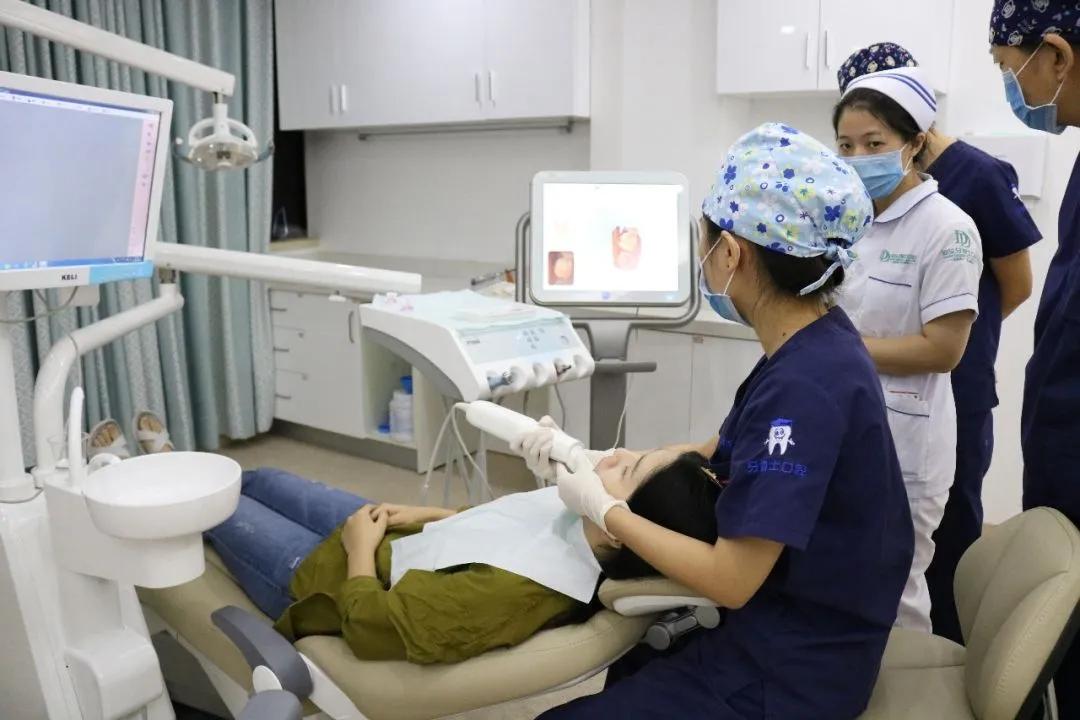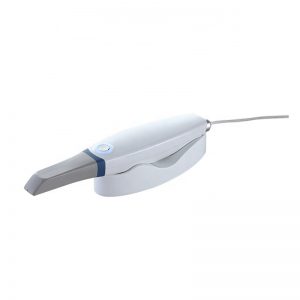How to choose 3D intra oral scanner for a dentist?
2024-01-08 14:38:24
More and more dentists prefer to use intra oral scanner to provide a better service for customers nowadays.It is my honor to share some experience regarding the oral scanner.
Here are 3 points for your reference.

I. How to choose 3D dental intra oral scanner for a dentist? Dental dentist requires careful consideration of various factors when they choose the dental clinic intra oral scanner. Here are some suggestions to help dentists choose the appropriate dental 3D intra oral scanner: Research available options: find the reputable brands and read reviews from other dentists to get an idea of the performance, reliability, and user experience of each scanner. Know what your need for your dental clinic: Consider your specific requirements and practice goals. The following factors should be considered when the dentists buy dental 3D oral scanner.

II. How should dentists maintenance the 3D intra oral scanner? Proper maintenance of a dental intra oral 3D scanner is very crucial to ensure its optimal performance, longevity, and accuracy. Here are some following guidelines for dentists on how to maintain a dental 3D intra oral scanner:
III. The advantages and competition on different brand of dental intra oral scanner, plz check the bellowing sheets.
Qian Peipei 8th Jan,2024

I. How to choose 3D dental intra oral scanner for a dentist? Dental dentist requires careful consideration of various factors when they choose the dental clinic intra oral scanner. Here are some suggestions to help dentists choose the appropriate dental 3D intra oral scanner: Research available options: find the reputable brands and read reviews from other dentists to get an idea of the performance, reliability, and user experience of each scanner. Know what your need for your dental clinic: Consider your specific requirements and practice goals. The following factors should be considered when the dentists buy dental 3D oral scanner.
- 1. Accuracy: Look for scanners that offer high accuracy in capturing intraoral details. For a dentist, accuracyof intra oral scanner is very crucial for precise digital impressions.
- 2. Speed: make evaluationthe scanning speed of the intra oral 3D dental scanner. Faster scanning can help dentists save more time during procedures, and also improve patient comfort.
- 3. Compatibility: Ensure that dental scanner is compatible with the software and other systems used in yourdental clinical practice, for example, CAD/CAM systems or 3D printers.
- 4. Availability of use: check the user-friendliness of the scanner. Look for those intuitive interfaces and ergonomic designs that convenient dentists comfortable handling.
- 5. Clinical work-flow integration: take assessmentshow well the scanner integrates into your existing clinical Seamless integration can be simplify processes and improve operation efficiency.
- 6. Cost: Checkyour budget and evaluate the cost of the dental 3D scanner, including any associated fees for software upgrading, maintenance, and support.
- 7. Trial use before you buy: Whenever possible, try out the scanners you are considering. Attend dental conferences or workshops where you can test different models by yourself. Some manufacturers may offer trial periods or demonstrations at yourdental clinical practice, allowing you to assess the performance and user experience for yourself.
- 8. Seek recommendations: Consult with colleagues or dental professionals who have well experience on using dental intraoral scanners. Their insights and recommendations can provide valuable information and help you make an exactly informed decision.
- 9. Evaluationsupport and training: Consider the level of support and training provided by the manufacturer. Qualified customer support which includes technical assistance and software upgrading, is essential for a smooth experience. Enough training options can help you and your team quickly adapt to the new technology.
- 10. Consider prospectivescalability: As your practice grows, you may want to expand your digital capabilities. Therefore, dentists should consider whether the dental scanner you need can be available to be coming upgrades or additional features to meet your evolving needs.
- 11. checkwarranty and service agreements: the dentists should read and know the warranty terms and service agreements offered by the factory. Ensure that the dental 3D scanner comes with appropriate warranty coverage and that servicing and repairs are readily available.

II. How should dentists maintenance the 3D intra oral scanner? Proper maintenance of a dental intra oral 3D scanner is very crucial to ensure its optimal performance, longevity, and accuracy. Here are some following guidelines for dentists on how to maintain a dental 3D intra oral scanner:
- 1. Follow manufacturer’s guidelines: Read and understand the manufacturer’s maintenance manual bookand recommendations. Different scanners may have specific maintenance requirements, so it’s very essential to operate the guidelines provided by the manufacturer.
- 2. Clean and autoclavethe scanner: Regularly clean and disinfect the dental 3D scanner according to the manual book. Use recommended cleaning solutions, wipes, or other cleaning methods to remove debris, saliva, and bacteria from the scanner’s surfaces. The dentists user should pay attention to the scanner tip because it comes into direct contact with the patient’s oral tissues.
- 3. Inspect the scanner for damage: Regularly inspectionthe scanner for any visible damage or signs of wear. Check for loose or frayed cables, cracks, or other physical damage. If you discover any issues, contact the seller or authorized service provider for assistance.
- 4. Check and clean the scanner tip: thetips of 3D dental scanner is a critical component that requires careful attention. Inspect the tip regularly for any debris, scratches, or damage that could affect scanning performance. Clean the tip using recommended cleaning methods or disinfectant wipes. Follow the manual book on how to properly clean and handle the scanner tip.
- 5. Updating software and hardware: Keep software and firmware of 3D dental scanner upgrading on daily operation. Regularly check for updates provided by the manual book and obey the recommended update procedures. Software updating often include bug fixes, performance improvements, and new features that can improve the scanner’s function.
- 6. Calibrate the scanner: Calibration is avery essential maintenance task for ensuring accurate measurements. Follow manual book on how to calibrate the scanner and perform calibration regularly as recommended. Calibration helps maintain continuous performance and accuracy of 3D dental scanner.
- 7. Store the scanner properly:To protect from dust and other contaminants, the dentists should store it in a clean and dry environment when the 3D dental scanner was not under operating condition. Dentists should Follow recommendations on storage temperature and humidity conditions in the manual book.
- 8. Well handle the scanner: Treat carefully the dental scanner to avoid accidental damage. To avoid of any dropping or mishandling the device, the dentists should use protective covers or cases when transporting or storing it.
- 9. Schedule professional service: Periodically, consider professional serviceor maintenance checks by the manufacturer or authorized service providers. They can perform more in-depth inspections, cleanings, and adjustments to ensure the intra oral 3D scanner is optimally useful direction on function.
- 10. Train and educate employees: the dental clinic and hospital should offerproper training to their staff on the handling, cleaning, disinfection etc maintenance procedures on the 3D dental Ensure all the dentists understand the importance of well maintenance and the recommended guidelines on manual book.
III. The advantages and competition on different brand of dental intra oral scanner, plz check the bellowing sheets.
| Competitive Comparision | |||||||
| Category | Medit i700 | 3Shape Trios 4 | Carestream wireless CS 3800 | Shining 3D Aoralscan 3 | Runyes V3 oral scanner | Panda 3 oral scanner | |
| Accuracy | Full-arch | 10.9um | 27.7um | 30+um | 50um | 20um | 10um |
| Scan area | 15*13mm | 20*17mm | 16 x 14 mm 13 x 7 mm | 16*12mm 12*9mm | 14*14mm | 18*16mm | |
| FPS | 70 | 12 | 20 | 15 | 18–24–30 | ||
| Depth-Of-Field | 2–21MM | 2–16mm | -2 ± 22mm | 15mm | 20MM | ||
| Speed | Dual-arch and bite | 2.5mins | 45s–1mins | 1.4mins | 2–3mins | 1.5mins | 1min |
| Handpiece | Dimensions | 248*44*47mm | 299*40*50mm | 226*38*50 mm | 281 × 33 × 46 mm | 23.8*340*44.7mm | 216*40*36mm |
| Weight | 245g | 375g | 240g | 240g | 210g | 226g | |
| Capture button | one sided | one sided | NO | one sided | One sided | One sided | |
| Tip | Tip size | 22.2*15.9mm | 21.5*18mm | 20*17mm 16*20mm 14*18mm | 20*16mm 16*12mm | 19.7*15.8mm | 19.6*14.6mm |
| Autoclavable | up to 60 times 121℃ 30mins 134℃ 4mins 135℃ 10mins | up to 150times 121℃ 15mins 134℃ 3mins | up to 60times 110℃ 4mins | up to 100times 134℃ 4mins | up to 120times high-pressure steam sterilization | up to 100times high-pressure steam sterilization | |
Qian Peipei 8th Jan,2024

 English
English